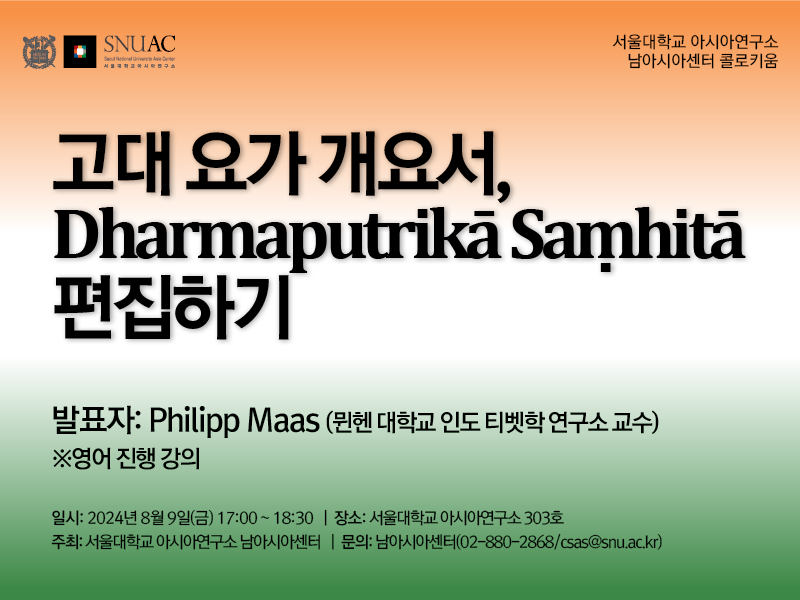- Center for South Asian Studies
- 02-880-2868
- csas@snu.ac.kr
고대 요가 개요서, Dharmaputrikā Saṃhitā 편집하기
[삼프로TV] 강성용의 남아시아 인사이드 [시즌 2] 스핀오프 2부: 인도의 미래는 어떻게 될까 (강성용 서울대 남아시아센터장)
July 21, 2024인도의 스타트업에서 짠내가 사라지고 있습니다 (맹현철 서울대 남아시아센터 선임연구원)
August 12, 2024The Compendium of Dharmaputra” (Dharmaputrikā Saṃhitā) is a metrical composition on yoga that was possibly composed as early as the sixth or seventh century CE by an author who referred to himself as “the son of Dharmaśīla.” This yoga work, which declares itself to be a summary of the yoga teaching first promulgated by Sanaka (one of the mythic sons of the god Brahmā) for the instruction of novices, provides a systematic account of a method to obtain either supernatural powers, possession of a corpse to attain a new body after death, or spiritual liberation. Despite the extraordinary relevance of this work for research in the early history of yoga and religion in pre-modern South Asia, the Dharmaputrikā Saṃhitā received virtually no scholarly attention until the publication of Christèle Barois’s seminal research article “The Dharmaputrikā Saṃhitā: Preliminary Notes on an Early Text on Yoga” in the Journal of Yoga Studies in 2020. In her almost book-length publication, Barois convincingly argues for an early date of this yoga compendium and a religious milieu of origin that was only marginally connected with Śaivism. Over the last couple of years, Christèle and I have worked jointly on a critical edition of the Dharmaputrikā Saṃhitā based on the twenty available manuscript sources and the printed edition by Yogin Naraharinātha (Kathmandu 1998). Our editorial work has considerably refined our knowledge of Dharmaputra’s works, especially concerning its original language of composition, its transmission history, and the usage of Buddhist terminology in the first to chapter topical sections “on yogic means” (sādhanaparakaraṇa) and “on postures” (āsanaparakaraṇa). In this presentation, I will introduce the yoga of the Dharmaputrikā Saṃhitā, its intended audiences and the methodology for reconstructing the text version of this fascinating work that resembles the original composition as closely as possible.
Philipp Maas (뮌헨 대학교 인도 티벳학 연구소 교수)




